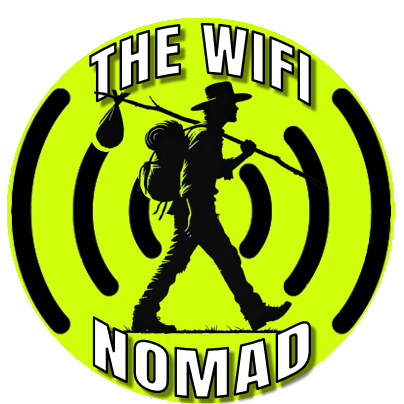I. Introduction
You’ve done the work—tried all sorts of ways to grow your online presence, traffic and affiliate income. From SEO and blogging to paid ads and combining free and paid strategies you have a toolbox of methods that can apply to any niche and goal. But now you’re thinking: “Now that I’ve learned all this, how do I put it all together?”
That’s what we’ll do in this final post. We’ll recap the traffic methods we’ve covered, show how each piece fits into the bigger picture and give you a roadmap for testing, optimizing and scaling. By the end of this you’ll know how to keep growing, stay adaptable to market changes and increase your affiliate income—while providing value to your audience.
Here’s what we’ll do:
- A quick summary of all the traffic methods—blogging and SEO to paid ads and more.
- How to keep testing and optimizing what you’ve learned so you never get bored.
- Why engagement and community matter—share your results, ask questions and keep learning.
- A call to action to go deeper—next level paid ads, collaborations or build a team to scale your business.
Whether you’re an experienced affiliate or just starting out the goal here is to nail it down, build your confidence and point you in the right direction.
II. Quick Summary of Traffic Methods
It’s easy to get lost in all the tactics and channels we’ve covered. Let’s do a quick summary of each, the key takeaways and how they drive (and optimize) traffic.
1. Blogging & SEO
- What Is: Writing articles and optimizing for Google.
- Key Benefits:
- Evergreen Traffic: Once a post ranks it can bring in traffic for months or years.
- Authority Building: High quality posts can position you as an expert, increase trust.
- Affiliate Integration: Mention products within your how-to guides or product reviews.
- Action Points:
- Do thorough keyword research.
- Keep paragraphs short and headings clear for readability.
- Update older posts regularly to keep freshness and rankings.
2. Social Media & Community Engagement
- Platforms: Facebook Groups, YouTube, Pinterest, Instagram, TikTok etc.
- Key:
- Direct Audience Interaction: Get quick feedback or start conversations around your niche.
- Viral Potential: If your content resonates shares and likes can grow your reach fast.
- Relationship Building: People who engage with you on social media often feel a personal connection and are more open to affiliate offers.
- Action Points:
- Post regularly and reply to comments or messages.
- Tailor content to each platform—visual for Pinterest, short videos for TikTok etc.
- Consider creating or joining niche groups (e.g. Facebook Groups) to deepen your community presence.
3. Paid Traffic Methods
- Examples:
- Facebook Ads: Great targeting based on interests, demographics, behaviors.
- Google Ads: High intent users searching for specific terms.
- Solo Ads: Rent someone else’s email list for quick targeted exposure.
- Key Benefits:
- Speed: You can see results fast.
- Scalability: If a campaign is profitable turn up the budget to multiply results.
- Precise Targeting: Show ads to only relevant demographics or retarget warm audiences.
- Action Points:
- Start with small budgets to test before scaling.
- Track your metrics (CPA, CPC, CTR)
- Test A/B headlines, images and offers.
4. Evergreen & Long-Form Content
- What Is: Creating in-depth guides (2,000+ words) that remain relevant over time.
- Key Benefits:
- Steady Traffic: Such posts can rank in search engines and bring in traffic.
- Higher Reader Trust: Comprehensive content positions you as an expert and increases affiliate clicks.
- Less Posting Frequency: One high quality post can outperform multiple short posts.
- Action Points:
- Choose topics your audience is always searching for.
- Add affiliate links where relevant and update the content periodically.
- Use a clear structure—subheadings, bullet points, short paragraphs.
5. Analytics & CRO
- What Is: Tracking user behavior (via Google Analytics, Facebook Insights) and optimizing for higher conversions (via A/B testing, improved landing pages).
- Key Benefits:
- Data Driven Decisions: No more guesswork.
- Higher ROI: Small changes in headlines or CTAs can increase affiliate sales big time.
- Deeper Insights: Know your bounce rate, CTR and where users drop off.
- Action Points:
- Always have Google Analytics (or equivalent) installed.
- Monitor key metrics: bounce rate, conversion rate, time on page.
- Test different versions of your ad creatives or landing pages.
6. Free & Paid Traffic
- Core Idea: Use organic methods (SEO, social media) to build trust and find your best content then amplify or retarget with paid ads for maximum results.
- Key Benefits:
- Steady Growth: You’re not dependent on one channel.
- Less Risk: You won’t waste money on untested content or offers.
- Warm Audience: Retargeting people who already know you often gets higher conversions.
- Action Points:
- Find blog posts or social posts that perform organically then boost them with ads.
- Set up a Facebook Pixel or Google retargeting tag to retarget people who read your free content.
All these combine to make a traffic strategy. Blogging alone is slow, paid ads alone is expensive, but add in analytics, consistent content updates, retargeting and you’ve got a machine that can produce long-term affiliate success.
III. Test, Optimize, Scale
This is just the starting point. Your affiliate or online business is never done—it’s an ongoing process of iteration, testing and refinement. Here’s how to keep the momentum:
1. Ongoing Experimentation
- Why: Market trends, platform algorithms and audience interests change. A strategy that worked last year won’t work today.
- How:
- Brainstorm new content ideas regularly.
- Try new ad angles or audiences.
- Change up your email marketing.
- Real World Tip: Keep a testing calendar—every month pick one new experiment (like a different landing page layout or a new social platform) and track the results.
2. Funnel Refining
No matter how people enter your funnel—blog post, YouTube video or Facebook Ad—they should have a seamless journey to your affiliate offer or product.
- Email List as the Hub:
- Use freebies (checklists or short eBooks) to capture emails.
- Send out nurture sequences to build trust before you pitch.
- Retarget those who open your emails but don’t buy or who click certain links with targeted ads.
- Segmenting Subscribers:
- If you have a large list segment by interest, purchase history or engagement level.
- Show advanced content to your seasoned readers, new subscribers might appreciate beginner content.
3. Expand Your Content
- Go Outside Your Comfort Zone: If you’ve only been blogging, consider starting a podcast or a short-form video series. Maybe try an infographic approach or host a webinar.
- Collaborations: Partner with influencers or fellow bloggers. Co-create content, cross-promote each other’s email lists or appear on each other’s YouTube channels to expand your reach.
- Repurpose Content: Turn a popular blog post into a podcast episode or condense it into a shareable infographic for Pinterest. This multiplies your effort.
4. Scale Paid Campaigns
Once you find a winning product or ad angle don’t be afraid to increase your budget. If you’re earning $2 for every $1 you spend on ads, scaling can quickly multiply your profits.
- Ad Fatigue: If your audience sees the same ad over and over performance will drop. Rotate ad creatives or expand targeting.
- Lookalike Audiences: Platforms like Facebook let you create new audiences that are similar to your existing customers or email subscribers making scaling more efficient.
5. Advanced Stuff
If you feel you’ve got the basics down consider more advanced tactics:
- Influencer Marketing: Pay or collaborate with social media influencers.
- Native Ads: Ads that blend in with the form and function of the website they appear on (e.g., Outbrain, Taboola).
- Deeper SEO: Implement advanced link building, site audits and content clustering.
- Webinars & Live Streaming: Engage your audience in real-time and boost trust and sales.
IV. Stay Connected & Community
One of the biggest keys to long term success is staying connected—with your audience, your peers and ongoing education.
1. Share Results and Ask Questions
- Stay Curious: When something works ask why. When something fails ask why too.
- Forums & Groups: Join marketing forums or Facebook Groups dedicated to affiliate marketing. Sharing your experiences can give you the answers to your problems.
- Real-Time Feedback: If you’re not sure if your landing page copy is working ask others for feedback. Sometimes an outsider’s perspective is exactly what you need.
2. Stay in Motion
Learning fatigue is real. It’s easy to read tutorial after tutorial and then do nothing. Try these:
- Set Micro-Deadlines: For example, “I’ll run an A/B test on my landing page by Friday” or “I’ll write two evergreen blog posts this month.”
- Track Your Wins: Keep a small notebook or spreadsheet. Every time you see an increase in clicks, a successful campaign or a SEO boost, write it down. This will keep you motivated.
- Revisit Old Wins: If a strategy worked before it might be time to refresh or scale it. Don’t forget about your past successes while chasing new ideas.
V. Get Started: Advanced Tactics
Now that you see how everything fits together—blogging, social media, paid ads, evergreen posts, analytics and free and paid—it’s time to get more advanced. Here’s a simple plan:
- Map Your Personal Strategy
- List 3 free traffic channels you’ll focus on (e.g., SEO blog posts, YouTube videos, Pinterest pins).
- Choose 1 or 2 paid methods (Facebook Ads, Google Ads or Solo Ads) to test or scale.
- Set Goals
- A specific affiliate income figure or email list sign-up goal.
- Example: “I want to make $1,000 a month from affiliate sales in 6 months.”
- Schedule
- How often will you create content—maybe one blog post a week or two YouTube videos a month.
- Small ad campaigns: “$10/day on Facebook to retarget blog visitors for a two-week test.”
- Monitor & Adjust
- Keep your analytics in front of you—bounce rate, CTR, conversions, ROAS (return on ad spend).
- Adjust if you see high costs and low returns. Scale profitable campaigns.
Want to go deeper? Consider advanced paid ad structures, affiliate collaborations (where you partner with other marketers), or building a virtual team to handle content creation, ads management or tech tasks. This will free you up to focus on strategy and relationships—key to your next level.
Affiliate Link Placeholder: If you have advanced courses or recommended marketing tools that help with scaling (e.g., funnel-building software, high-level SEO tools) this is a great place to link to them as next-step resources.
VI. Done
1. Last Words
We’ve covered a whole roadmap over the series:
- Content Creation: Blogs, evergreen posts and social media are the foundation of free, long-term traffic.
- Paid Ads: Quick, targeted results to complement slow-burn organic strategies.
- Analytics & CRO: The science of measuring results and tweaking funnels or offers for maximum ROI.
- Free & Paid: A combination approach that leverages the best of both.
And now you’re in the driver’s seat of your affiliate or online business.
2. Open to You
This may be the last article in the series but it’s really the start of your next journey. Now that you have these strategies, go apply them, fail fast if needed, learn from the data and keep iterating. Don’t be shy to ask questions—join marketing communities, comment in forums or network on social platforms where other entrepreneurs hang out. The digital landscape changes daily and staying connected will help you adapt fast.
3. See you!
Think of your traffic and affiliate income like a garden. You have the seeds (traffic methods), the knowledge to water and fertilize them (analytics and optimization) and various tools (SEO, social media, paid ads) to shape how that garden grows. Yes, you’ll hit rough patches—algorithm changes, ad cost increases, creative burnout. But with consistent effort and the ability to pivot you can build a sustainable, profitable online business that lasts.
Whether you’re looking for a part-time side hustle or a full-blown affiliate empire, keep your focus on value—helping your audience with real solutions and honest recommendations. That’s how you build trust and trust is the currency of affiliate marketing.
Now go: adjust, test and scale at your own speed. When you need a refresher come back to these articles or hit up a community of other marketers. With persistence and curiosity you can go as far as you want with your traffic and affiliate income.
Good luck and remember, the magic happens when you apply what you’ve learned and make it happen!


